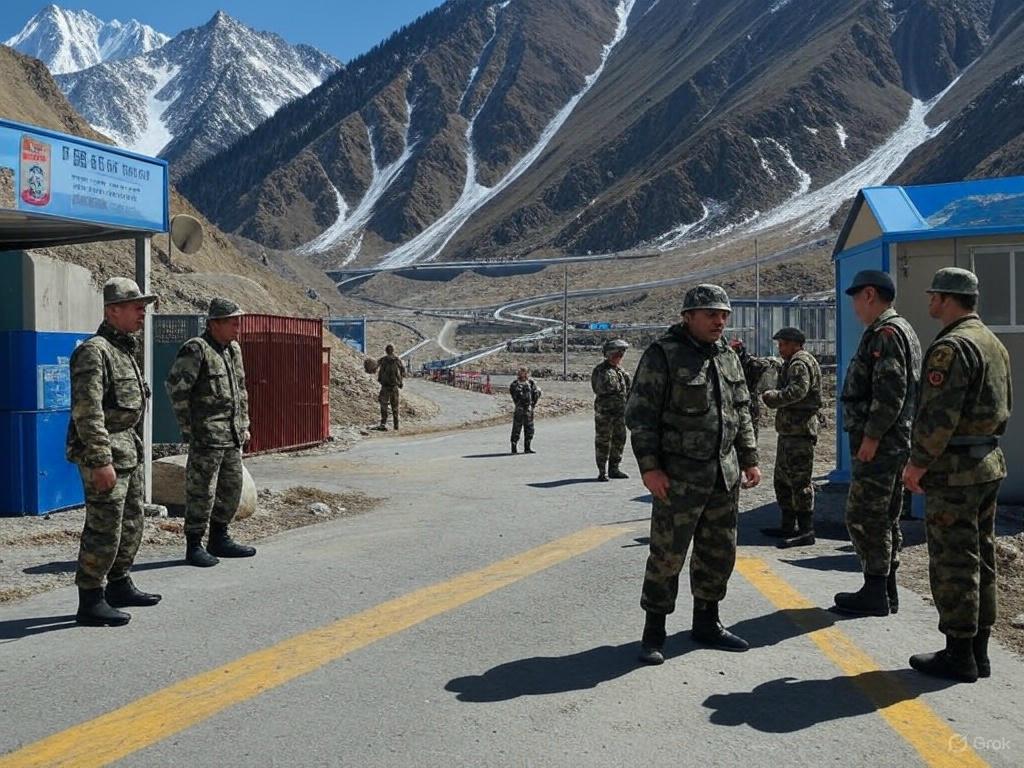The China-India border dispute, centered along the 3,800-kilometer Line of Actual Control (LAC), remains one of Asia’s most volatile geopolitical flashpoints. Spanning 27 contested areas, including Aksai Chin, Demchok, and Depsang Plains, the dispute has seen significant developments since the deadly Galwan Valley clash in June 2020, which killed 20 Indian soldiers and an undisclosed number of Chinese troops. This incident marked the worst escalation in over four decades, fundamentally straining bilateral relations. Both nations have since maintained over 100,000 troops along the LAC, with ongoing infrastructure development fueling tensions.

The roots of the conflict lie in the poorly demarcated LAC, established after the 1962 Sino-Indian War. Disagreements over territorial claims, particularly in Ladakh and Arunachal Pradesh, have led to frequent standoffs. Recent developments highlight both escalation and tentative de-escalation efforts. In 2022, a clash near Tawang in Arunachal Pradesh saw troops engage in hand-to-hand fighting, underscoring the fragility of the border situation. China’s construction of villages, roads, and military outposts near contested areas has been matched by India’s own infrastructure push, including a high-altitude tunnel in 2024, which Beijing criticized as provocative. These actions reflect a broader competition for strategic dominance in the Himalayas, raising the risk of miscalculation between two nuclear-armed powers.
Despite the tensions, diplomatic and military talks have yielded some progress. By October 2024, both sides agreed to partial disengagement in Depsang and Demchok, reducing troop presence in these flashpoints. This followed multiple rounds of corps commander-level talks, with the 21st round in February 2024 emphasizing de-escalation. However, a full resolution remains elusive, as mutual distrust persists. India accuses China of violating bilateral agreements by militarizing the border, while China claims India’s infrastructure projects threaten its sovereignty. The 27 disputed areas, including strategic locations like Pangong Lake and Hot Springs, continue to be heavily militarized, with no clear timeline for complete disengagement.
The broader implications of the dispute extend beyond the border. India’s response to the 2020 clash included banning Chinese apps like TikTok and restricting Chinese investments, signaling a broader economic decoupling. Meanwhile, China’s growing influence in South Asia, particularly through its Belt and Road Initiative, has heightened India’s strategic concerns. Both nations have sought to avoid all-out conflict, but domestic political pressures—nationalism in India and China’s assertive foreign policy—complicate negotiations. Proposals for a “package deal” to settle the border, such as territorial swaps, have been discussed in the past but repeatedly stalled due to domestic opposition.
As of May 2025, the situation remains tense but stable, with no major clashes reported recently. However, the heavy military presence and ongoing infrastructure race suggest that the 27 contested areas will remain flashpoints. Without a mutually acceptable framework for demarcation and de-escalation, the China-India border dispute risks shaping not only bilateral ties but also the broader geopolitical landscape in Asia.






